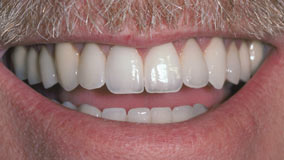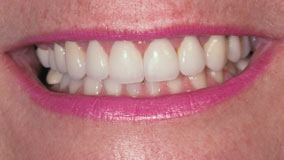Endodontics/Root Canal Therapy
Our office treats even the most complex endodontics cases. With Dr. Miller’s advanced skill and the use of our laser technology, Dr. Miller many times can save teeth which were previously deemed not worth saving.
Deep within your tooth is an area of soft tissue called the pulp, which contains thevtooth’s nerves and blood supply. This tissue travels through canals which run down through the roots of each tooth. There is generally one canal on the front teeth, and up to four canals on molars or back teeth.
Why Do I Need a Root Canal Procedure?
If a tooth has become traumatized through fracture, deep decay or undue trauma upon the tooth, the pulp tissue can become irreversibly irritated. Eventually, the tissue inside the tooth will die and will become infected. Once this happens, the tooth cannot heal itself and will require a root canal treatment. The sooner a patient seek endodontic treatment, the better the long term result may be.
What is a Root Canal Procedure?
A root canal removes the infected or dead pulp tissue in the root of the tooth by cleaning out the diseased tissue and reshaping the canal. Dr Miller utilizes a laser to facilitate thoroughly cleaning and sterilizing g the entire canal. The canal is then filled and carefully sealed with gutta-percha, a rubberlike material, to prevent re-contamination of the tooth. The use of the laser increases he success of the root canal therapy and aids in the elimination of discomfort. The laser is always used to retreat previously endodontically treated teeth that are failing and that can be saved.
Since tooth structure has been removed to accomplish the root canal access, the tooth is predisposed to fracturing, therefore it is recommended to protect the tooth with a crown following the root canal procedure.
Dr. Miller has been delivering expert, comfortable endodontic treatment and retreatment of failing root canalled teeth for 45 years. You will discover how comfortable the procedure is with lasers, modern anesthesia, IV conscious sedation and new dental technology.
Call us today for a consultation: 503.640.9310
When the pulp tissue becomes infected or dies due to a deep cavity or fracture that allows bacteria to seep in, or injury due to trauma, it will cause discomfort and pain. Damaged or dead pulp causes increased blood flow and cellular activity, and pressure builds up inside the tooth causing pain. Some things will make a tooth in this condition hurt worse, especially hot foods or liquids or chewing pressure.
The tooth will not heal by itself. Without treatment, the infection will spread to the surrounding bone causing additional problems. Pain usually worsens until one is forced to seek emergency dental attention. The only alternative is extraction of the tooth, which can cause surrounding teeth to shift, resulting in a bad bite. Though an extraction is cheaper, the space left behind will require a dental implant or a bridge, which can be more expensive than root canal therapy. If you have the choice, it’s always best to keep your original teeth.
More than 95 percent of root canal treatments are successful. However, sometimes a case needs to be redone and the prognosis for re-treatment is very poor. When this occurs, the recommendation is removal of the tooth and replacement with an implant or restore the space with a bridge.
If a large amount of infection is present, or you have diabetes or any immune system suppression disease, antibiotics will be prescribed. Almost all teeth will need to be restored with a crown soon after completely the root canal treatment. From this point on, brush and floss regularly, avoid chewing hard foods on the treated tooth until it is comfortable.




